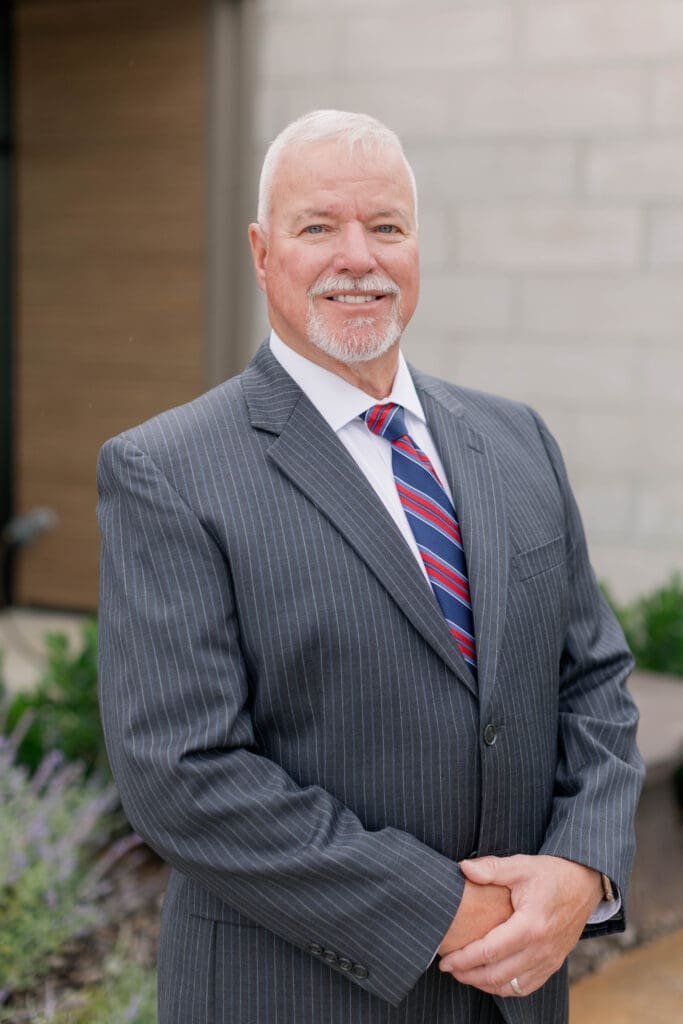MURRAY – Rural hospitals across the nation are in crisis mode. Low reimbursement rates on services and soaring expenses have wreaked havoc on profit margins and fueled the proliferation of corporate healthcare systems, creating a landscape where independent community hospitals are increasingly scarce.
“In the State of Kentucky, there’s only 12 of us left,” Murray-Calloway County Hospital CEO Jerry Penner said in a recent interview, referring to the current number of independent hospitals in the commonwealth. As he recalled, there were around 27 in 2013. By 2018, that number dropped to 18. “Now, we’re down to 12, and most of those are critical access hospitals. They’ve been gobbled up. So, those systems have been busy.”
A 2016 report from the Kaiser Foundation, which cited the closure of Parkway Regional Hospital in Fulton, Ky., among others nationwide, noted that factors contributing to the plight of rural hospitals included “aging, poor, and shrinking populations, high uninsured rates and a payer mix dominated by Medicare and Medicaid, economic challenges in the community, aging facilities, outdated payment and delivery system models, and business decisions by corporate owners/operators.”
The trend is longstanding. In 1999, Jackson Purchase Medical Center in Mayfield, which opened as an independent hospital in 1993, joined Lifepoint Health. A decade earlier, Lourdes Hospital in Paducah merged with Mercy Health. Then in 2018, ownership of the facility changed again when Mercy merged with Bon Secours.
In July, West Tennessee Healthcare took over operations at Henry County Medical Center (HCMC) in Paris, Tenn. One year earlier, HCMC announced the closure of its obstetrics unit, a drastic measure taken in an attempt to bolster the hospital’s bottom line.
And last month, in Hopkinsville, the Jennie Stuart Health Board of Trustees announced entering a nonbinding agreement to transfer the assets of Jennie Stuart Medical Center in a merger with Deaconess Health, a nonprofit health system, based in Evansville, Indiana, which operates over 150 healthcare facilities in Kentucky, Indiana and Illinois.
“We are stewards of a cherished asset that has both ensured the health of our community and served as an anchor of the local economy for more than a century,” penned Leslie Carroll, Jennie Stuart Health board chair, in a guest column for the Hoptown Chronicle. “This is a responsibility we do not take lightly. … Our focus is positioning Jennie Stuart and its physicians for success both today and well-beyond our years of service to the Board.
“The fact is that local non-profit health systems across the country are facing significant challenges. Jennie Stuart is not immune to these pressures, and while leadership works diligently to navigate a difficult operating environment, our system lacks the financial resources necessary to make much needed investments in the capabilities and technologies required of a modern health system.”
“Capital is a huge, huge need for us every year,” Penner said. “I can tell you, in 2012, I spent just under two or three million dollars in capital in a single year. (In 2023), I spent $3.8 million on the linear accelerator, one piece of equipment. Capital for me is not just medical equipment. You’re modernizing your MRIs, your CT scans, nuclear medicine cameras and things like that. It’s the HVAC systems we have on the hospital. It’s the roofs that need repairing. It’s the domestic hot water that needs to be replaced to the tunes of millions of dollars to a facility that was built in the ‘50s and ‘60s.”
In her column, Carroll referenced an S&P Global report published last week that characterized Jennie Stuart’s operating performance as “stable” but said it also outlines the organization’s financial limitations promulgated by “historically elevated expenses.”
“A stronger future for Jennie Stuart demands proactive action today to not only maintain our financial position, but also to ensure a brighter future for our patients, providers and community tomorrow,” Carol wrote. “Over the last year, our Board has considered a thorough list of potential partnerships and other strategic initiatives that could create a stronger future for Jennie Stuart (including opportunities specific to gaining access to an electronic health record, or EHR, system).”
“That is the trend nationally, especially in rural communities, because of all the challenges that go into being a standalone rural hospital,” MCCH Chief Nursing Officer Jeff Eye said. “You have to execute year after year after year and be successful because there’s just not a lot of margin for error. That’s why we are fixated sometimes on days cash on hand – that’s our runaway of if things got bad, that’s how long we have in order to get things corrected or get into a partnership with a health system to support us financially until changes can be made to make the hospital solvent again.”
“I don’t know what (Jennie Stuart’s) financial situation was or what their drive was,” Penner said. “I can tell you what I saw from Henry (County) and (heard) in my conversations with their staff and CEO over several years – they had fallen on some pretty tough financial times, and they’ll be the first to say they had to make some difficult decisions to go forward.
“At one point, (Henry County got down to) 27 days cash. I would’ve been nervous as a cat if I’d been at 27 days cash. That’s tough. You start wondering, ‘How much do I have in my reserve? What happens if there’s a rainy day? What happens if we don’t have a good flu season?’ I can see why they made that (decision).”

Penner said that the situation in Hopkinsville is different than the one at HCMC, “maybe even vastly different,” because Jennie Stuart is still financially solvent, and the hospital’s leadership and board of trustees are looking ahead to address the difficulties they anticipate in the near future.
“It’s important for the community to have a hospital,” Eye said. “I would much rather Henry County and Hopkinsville have a system-aligned hospital than to not have one at all. That’s where Henry County was headed for sure. I don’t know about Hopkinsville. There’s discussion to be (had) about could changes have been made to the operations of these hospitals a long time ago that they would at least have the option to remain independent if they chose to.”
“With support from leading external advisors,” Carroll wrote, “we determined that Deaconess is an ideal partner for Jennie Stuart, given their closely aligned mission of providing high-quality, community-focused care and ability to provide the resources needed to make essential investments in Jennie Stuart’s technology, facilities and the employee experience.”
Prior to coming to MCCH, Eye had experience working in both independent and system hospitals in the Kansas City area. He said that health systems in and of themselves are not inherently bad; it depends on the mission of the organization.

“The impact and the way you experience working in one of those has a lot to do with the mission, vision, values of the organization, their management philosophy and the way that they execute the strategy. You can have good and bad in both,” he explained. “The health system I worked for had a very community-centric drive. We were pushing services out to our rural hospitals.
“We (tried) to keep patients in the system but out in their local communities until they needed those complex services so that the large hospital was not using their capacity to take care of things that we, in theory, could take care of at my suburban community hospital or one (of the other small) hospitals.”
But other systems in the same market were not that way, he said, noting that they only offered services that were profitable in their community hospitals because they were trying to pull patients into the large facilities.
“That’s why people (get uncomfortable),” Eye said. “There is this fear of, depending on how the system views its business and how it wants to deliver care, then you can be in a situation where they’re making decisions that are best for the system or investing in communities where their investments will have a higher return. Then you’re in a situation where they look for unprofitable services and they cut them; or they say, ‘You’re a rural community hospital; you do not need to be offering neurology, pulmonology, a cancer center. Those are things we should do at the big hospital.’ That’s not a given. It really is dependent on the management philosophy of the health system.”
He added that, like MCCH, Jennie Stuart offers a more complete set of services than is typically found in a rural hospital its size, which could put the Hopkinsville community at risk of losing some service lines. “I think people are justified in being worried that a system would say, ‘This is not sustainable, and we cannot offer all of these services.’”
“For me, there are two sides to this,” Eye said. “When I first started with the system (in Kansas City), it functioned more as a confederation of hospitals – they were collaborative, but they weren’t managed as a system. That was a transition that happened while I was there – we brought in new system leadership, a new philosophy and (decided) we’re going to operate as a system.”
He explained that prior to then, the hospital paid a system allocation to cover administration costs, but the local board still had control of the hospital’s profits. After the transition, all of the money went into one bucket.
“The decisions on how that capital was deployed was a system decision, not a local decision,” Eye said. “So, all of these hospitals who, hopefully, on most years, are operating at some level of a profit are putting money into this fund to where someone else makes the decision of where to invest that money. My local board became more of an advisory board than a hospital board.”
At the same time, during lean years, Eye said there was not a lot of stress because the system would subsidize the losses.
Despite valid concerns over losing local control of capital investments, merging with health systems can also be beneficial to standalone hospitals.
“There are always decisions to be made with affiliations or purchases or systemizing,” Penner said, “and they’re always going to hover around the big ones: your financial programs, your ability to negotiate contracts – they can go fight the Anthems and the Aetnas and get the rates of a combined facility that I can’t get as a standalone; that is a distinct advantage – (and) information management.
“The economies of scale that a system brings in is monumental. I’m not going to lie to you; it’s monumental. We don’t have that. We do it all on our own. So, there are some attractive things about being part of a system. … But all those things would be really tough to unbundle on the back end. That’s why it never reverses. That’s why the community can’t ever come back and say, ‘We’re going to buy you out of the system.’”





This is an outstanding article on a topic of crucial importance. The national trend toward hospital closings is one that could affect our own community and The Murray Sentinel is providing an essential service by informing the public of relevant aspects of the issue.
Thank you, Constance!